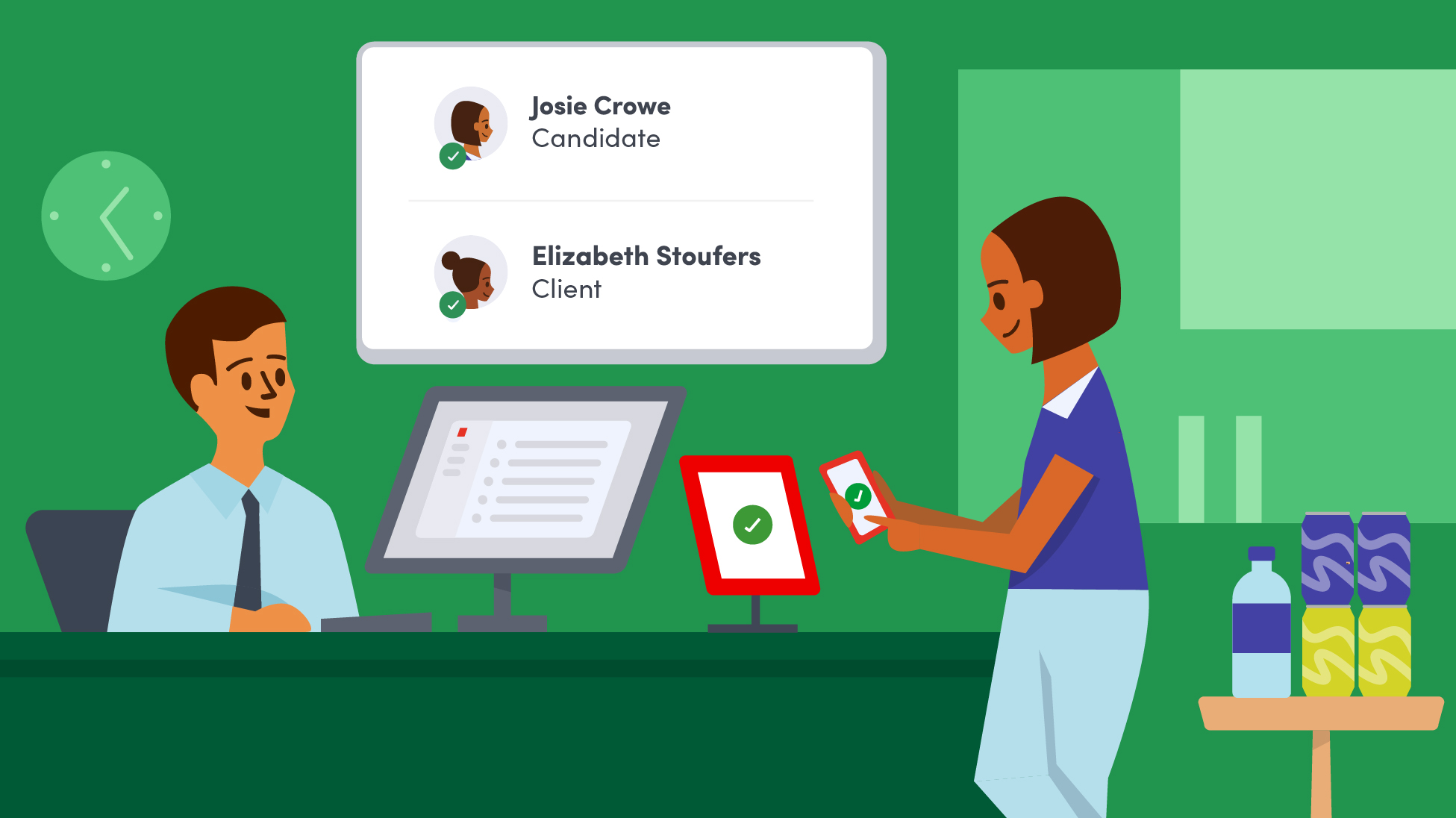When you're inviting guests to your workplace, you want it to be a welcoming experience—one that reflects your business. But safety and security are always a concern. With the rise of distributed office models and hybrid work, managing who comes in and out of each location is more complex than ever. Each site may have unique security needs, which call for specific visitor requirements.
In an era of increased physical security risks, knowing exactly who is in your building at all times is critical. That's why visitor logs are a necessary tool in this challenging landscape.
What is a visitor log?
A visitor log is a record-keeping system organizations use to track everyone who enters and exits a facility. It helps maintain a secure environment by documenting details like visitor names, check-in and check-out times, and often additional information such as the purpose of the visit or host details.
Traditionally, visitor logs were paper sign-in sheets at the front desk. Then, some organizations transitioned to spreadsheets (i.e., Excel or Google Sheets), but this approach proved to be just as tedious and time-consuming. That's why many workplaces today use digital visitor logs for improved security, efficiency, and data privacy.
Digital logs streamline check-ins (sometimes through QR codes or mobile devices), provide real-time visitor tracking, and allow easy access to contact details during emergencies. They also support compliance with privacy laws by securing visitor data.
What are the benefits of a digital visitor log?
Visitor logs are essential today because they help ensure workplace security, compliance, and safety. Here's why they matter so much:
Enhanced workplace security
Visitor logs, especially digital ones, help keep workplaces safe by making it easy to know who's in the building at any time. For example, digital systems allow security teams to see real-time visitor data, trigger alerts for unwanted visitors, and even screen against watchlists. This is especially important given that 48% of companies now see physical security as their top concern.
Faster, smoother check-ins
Digital visitor logs help reduce wait times and lobby congestion by allowing guests to sign in quickly using kiosks, smartphones, or QR codes. Companies like Technicolor have successfully used digital logs to make their visitor registration process more efficient across multiple locations.
Compliance with privacy regulations
Digital logs help organizations comply with privacy laws like the General Data Protection Regulation (GDPR) and the California Consumer Privacy Act (CCPA). Unlike pen-and-paper logs, which anyone can see, digital records limit visibility to predetermined security staff. Many digital log systems also provide features that allow data to be deleted or anonymized after a specified period.
Emergency preparedness
During critical situations (e.g., a property fire or natural disaster), you need to know who's in the building to facilitate faster evacuations and to better assist first responders. Up-to-date visitor data ensures everyone is accounted for. Digital visitor logs provide in-the-moment visibility by tracking entries and exits via digital check-ins.
Actionable data and analytics
Digital logs offer valuable insights on visitor patterns—such as peak visitor times and visit durations—that help workplace managers optimize staffing, resources, and workspace layout. By analyzing this data, organizations can better prepare for high-traffic periods and make informed decisions about space utilization.
Audit trails and reporting
Digital logs maintain detailed records that can be easily retrieved for audits, showing who accessed or modified visitor information. This transparency helps organizations demonstrate compliance during privacy audits or regulatory reviews, offering a clear, timestamped record of visitor data.
{{protip-1}}
What information should be included in a visitor log?
A visitor log records essential details about every person who enters and leaves a workplace, helping to ensure security, compliance, and operational efficiency. To cover all your bases, be sure to capture these key details:
- Full name. Always collect the visitor’s full name. This is the first step in identifying each guest and is crucial for security tracking and audits.
- Contact information. A phone number or email address allows hosts to contact visitors if needed, and it can be critical in emergencies.
- Host or point of contact. Logging the host’s name (the person the visitor is meeting) creates accountability and helps locate visitors quickly.
- Purpose of visit. Capturing the purpose of each visit provides context for security teams and helps with compliance audits. For example, Technicolor’s digital logs categorize visit types, allowing teams to spot unusual visitor patterns or unapproved visits more effectively.
- Check-in and check-out times. Accurate entry and exit times help ensure guests only enter the areas they're allowed to be in. Various compliance standards require detailed visitor records. They're also helpful during emergency evacuations.
- Photo identification. A photo ID can help visually verify each visitor's identity and country of origin. Compliance standards like ITAR have different requirements for non-U.S. citizens.
- Legal documents. Any necessary documents, like NDAs or health waivers, can be signed during check-in for added security and compliance.
- Visitor type. Categorizing visitors (e.g., contractors, guests, or vendors) makes it easier for security teams to assign the right access levels for each person entering the workplace.
- Emergency contact details. Having an emergency contact on record can be vital if a visitor needs assistance or has a medical emergency at your workplace.
For IT and security managers, digital logs offer an organized, compliant, and reliable system that supports both daily operations and emergency preparedness.
{{protip-2}}
How does a visitor management system help capture visitor data?
A visitor management system (VMS) captures visitor data efficiently and securely through digital tools that streamline the check-in process and automate data collection. Here’s how it works:
- Digital check-in process. Visitors use kiosks, tablets, or their smartphones to enter their details, such as name, contact info, and reason for visiting.
- Automated data collection. The VMS then automatically collects and stores visitor data (e.g., timestamps for check-in and check-out).
- Photo capture. Many visitor management systems can capture a guest’s photo at check-in, providing a visual ID for security teams.
- Data analytics. Over time, the system can provide insights into visitor patterns, such as peak visitor hours and visit duration. Facilities managers can use this data to optimize staffing, allocate resources, and improve visitor experience.
—
Are you interested in finding out how a visitor management system can help you automate your check-in experience? Check out our guide, “The buyer’s guide for workplace security software,” to learn more!

While we can’t predict the future, one thing is certain: employees and visitors should be notified immediately if their safety is at risk. Whether it’s a major crisis or a minor technical issue, timely communication keeps everyone—onsite or remote—informed and safe. This guide explains how Envoy’s Emergency Notifications provide a simple, reliable way to alert your team instantly.

Read more
Searching for a visitor management solution? Learn what to look out for and how to choose the best tech for your team.
Managing your space well doesn’t have to be difficult. But if you want to be successful, you need the right approach.
A well-run workplace can set your team up for success. Learn why workplace management matters and how to do it right.
Workplace security is critical to the future of your business. Learn why it matters, what threats to watch for, and how to strengthen your workplace security plan.
In this post, we’ll explore what workplace compliance is and how to build a compliance culture for your organization.
With more folks sending personal packages to the workplace, having a sound mailroom management system in place is key.












